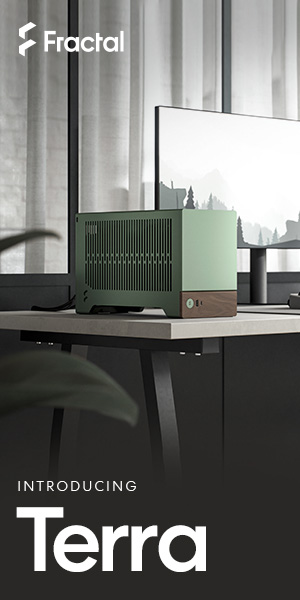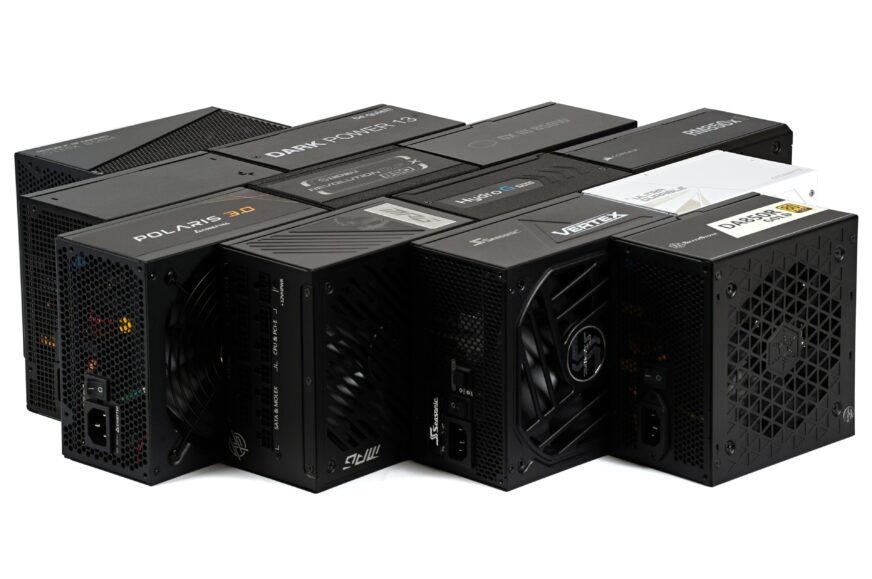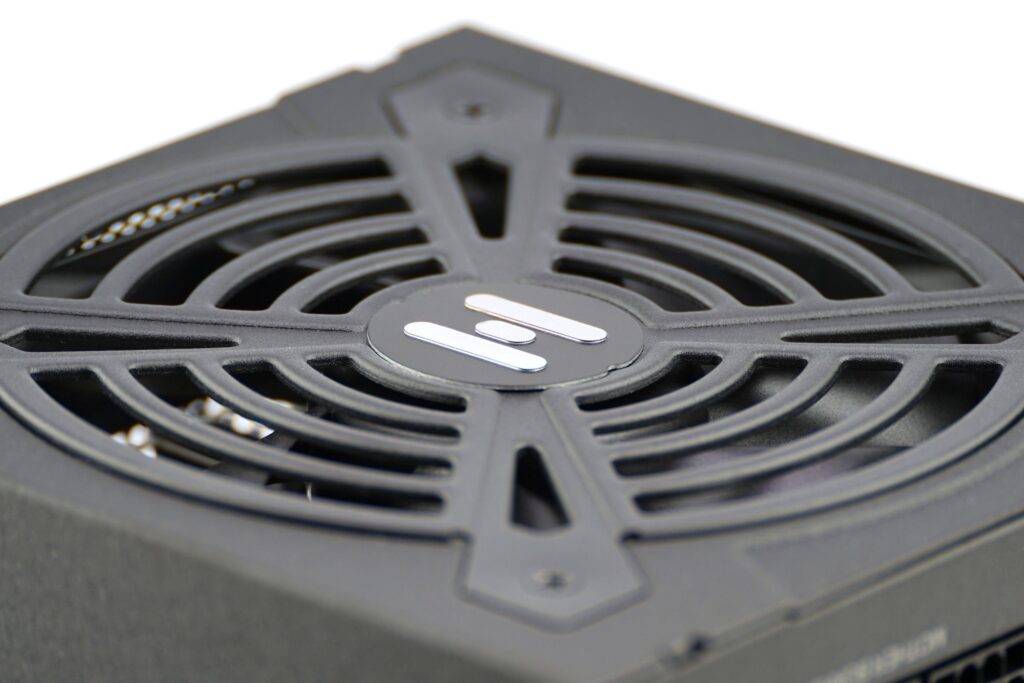12× ATX 3.0 PSU
Recently, in fact for most of 2023, we’ve been collecting various ATX 3.0 power supplies. In total, twelve have been collected, which is also the final number with which we are now leaving for measurements. Before we start publishing the tests, you can check out a comprehensive overview of all the models. Or leave a comment, which we can eventually incorporate into our analyses.
The articles with PSU previews are over. Now the more interesting ones will start to come out – tests of the models we managed to get our hands on. And although everyone would probably have compiled their selection of test power supplies a little differently, in the end we’re glad that we’ve managed to cover the vast majority of the key brands, and within them, we believe, the models in whose results you’ll be interested.
Sure, that kilowatt DeepCool PX1000G is a bit of a “mark in the picture what doesn’t belong” among the otherwise 850 W ones, similarly to the BeQuiet! Dark Power 13, which is the only one with 80 Plus Titanium (the others have the 80 Plus Gold sticker). In the beginning, when we were planning these PSU tests, it was not clear which ones we were going to get our hands on, most of them didn’t even exist yet. We didn’t really count on the fact that there would be so many of them that they wouldn’t fit in the width of a photo with a reasonable thumbnail size, given that we have no history in this area (power supply tests).
But in the end we are quite satisfied, the selection is quite varied although some models are missing. As far as computer power supplies are concerned, we do not have the same ambitions with them as with fans, they are and will be for us only a marginal topic in the future.
The table below then lists all the power supplies for which we will be releasing tests in the coming months. Details of a selected model can be found in this link, where the “previews” are concentrated. Below the table there is a short text on the basic things that will be the content of the tests. If you have any ideas for possible additions, you can let us know.
| Značka a model zdroja | Základné parametre výrobcu | Cena [eur] | ||||||||||
| Trvalý výkon [W] | Trvalá prúd. záťaž [A] | 80 Plus | Konektory | AWG | ||||||||
| +12 V | +5 V | +3,3 V | 16-pin * | 6+2-pin * | 8/4+4-pin | SATA | 4-pin Molex | |||||
| Asus ROG Strix 850G Aura | 850 | 70.8 | 22.0 | 22.0 | Gold | 1+0× | 1+2× | 2× | 5× | 4× | 18–16 | 208 |
| BeQuiet! Dark Power 13 | 850 | 70.0 | 24.0 | 24.0 | Titanium | 1+0× | 4+0× | 2× | 12× | 3× | N/A | 250 |
| Cooler Master GX III Gold 850 | 850 | 70.8 | 20.0 | 20.0 | Gold | 1+0× | 3+0× | 2× | 8× | 4× | 18–16 | 170 |
| Corsair RM850x Shift | 850 | 70.8 | 20.0 | 20.0 | Gold | 1+0× | 4+0× | 2× | 12× | 8× | 18–16 | 190 |
| DeepCool PX1000G | 1000 | 83.3 | 22.0 | 22.0 | Gold | 1+0× | 3+0× | 2× | 7× | 4× | 18–16 | 180 |
| Enermax ERT850 EWT | 850 | 70.5 | 20.0 | 20.0 | Gold | 1+1× | 4+0× | 2× | 12× | 6× | 18–16 | 160 |
| FSP Hydro G Pro ATX3.0 | 850 | 70.8 | 20.0 | 20.0 | Gold | 1+0× | 3+0× | 2× | 10× | 3× | 18–16 | 150 |
| Gigabyte GP-UD850GM PG5W | 850 | 70.8 | 20.0 | 20.0 | Gold | 1+0× | 4+0× | 2× | 8× | 3× | 18–16 | 115 |
| Chieftec Polaris 3.0 (PPS-850FC) | 850 | 70.8 | 22.0 | 22.0 | Gold | 1+0× | 2+0× | 2× | 12× | 4× | 18–16 | 152 |
| MSI MPG A850G | 850 | 70.8 | 22.0 | 22.0 | Gold | 1+0× | 4+2× | 2× | 7× | 4× | 18–16 | 169 |
| Seasonic Vertex GX-850 | 850 | 70.0 | 20.0 | 20.0 | Gold | 1+0× | 3+0× | 2× | 8× | 3× | 18–16 | 200 |
| SilverStone DA850R Gold | 850 | 70.5 | 20.0 | 20.0 | Gold | 1+0× | 4+0× | 2× | 8× | 6× | 18–16 | 180 |
Electrical part…
For most measurements, we will travel to an external testlab that is equipped with a Chroma Load. Thanks to it, we will be able to load the power supplies to a precise percentage and measure efficiency, regulation or voltage ripple at that percentage. In short, basic stuff. We will also have a PCB with a 16-pin connector, so we will also attempt thermal tests at a 55 A current load, which these connectors (12VHPWR) should be capable of.
From the external testlab we will also take away information about the fan speeds that correspond to each load level. And that brings us to the part of the measurements realized in the HWCooling testlab.
… and the acoustic part of the tests
While we don’t have the background for electrical measurements of power supplies, we are well prepared when it comes to sound analysis. Similar to fan tests and graphics card tests, you can look forward to spectrograms with frequency analysis of sound. While it will not focus on coil sound (we would need to have our own Load for that), it will highlight the interaction of the fan with the grille in front of the fan and the shield already behind it.
We will publish a separate detailed article on the test methodology later, so that you have a clearer idea of all the procedures and so that the test scenes can be reconstructed.
English translation and edit by Jozef Dudáš
- Contents
- 12× ATX 3.0 PSU














